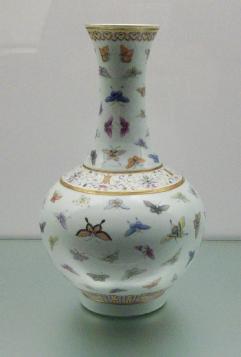Themes
The research team on the project will focus on five subject areas.
1. Asian Goods in the Political Economy of Europe
The project team will survey the economic and mercantilist writings on imports of Asian goods, including economic treatises, pamphlets and state and company debates on trade with Asia. We will investigate perceptions of Asian goods in Europe’s improving societies, including colonial and projecting policies. We will explore attitudes to Asian commodities, policies for adapting them, building European markets for them, and ideas on alternative sources of supply or substitute products.
2. Asian Goods and European Consumer Cultures
We now have a strong core of studies of the material culture and consumer practices of seventeenth- and eighteenth-century Europe – studies which demonstrate the deep penetration of Asian-sourced goods into everyday life across Europe – in Holland, the Southern Netherlands, in Britain, in France, in Spain, in Scandinavia, and Central Europe. But we know a great deal less about how these goods passed from ships and warehouses to cupboards and bodies. This theme will also investigate the role of merchants and East India Companies in developing the markets through introducing new practices of sociability as well as retailing and advertising practices.
We aim to investigate how markets in Europe were made for Asian-sourced goods, and to understand how these goods were designed, acquired and distributed in such quantities to enter into the everyday lives of at least one third of the populations of Europe and the Atlantic world. This was a major step in making the industrious revolution that preceded and coincided with the industrial revolution.
3. Asian goods: Making and Distributing
This Asian export-ware sector developed key characteristics of quality, reliability, standard goods and delivery to replace the sporadic appearance of the surprise parcels of the cabinet of curiosities. This was world-class production of fine, but affordable consumer ware, marked by diversity, taste and fashion. This part of the project will investigate the technologies and industrial organization of Indian and Chinese production of export ware, especially those areas of India’s fine chintzes, focussing on the Coromandel coast and Gujarat, and China’s porcelain centre of Jingdezhen, in both cases as these were accessed through European factories in Madras, Negapatnam, Pondicherry, Tranquebar, Surat, and Canton. It will assess European writings and perceptions of these Asian production processes. There is a separate history of the ships, companies and trade which brought these goods to Europe. But this is a history also sub-divided among different European historiographies, maritime and colonial histories. We will connect up these histories to put together a more comprehensive view of how these goods were acquired, and the practices and customs by which they were distributed.
4. Asian Goods and the Transmission of Knowledge
An important part of the research will address the nodes of knowledge exchange, notably those Asian ‘factories’ in Bombay, Madras and Canton, and those in the London metropole, for example the London Customs House and the auction houses. The postdoctoral fellows will investigate parallel nodes for the other European cases. We will study how ships that took 18 months to complete their journeys could fill their orders in their Indian factories and Canton within 4-5 months, meet the special orders of private trade, and respond to fashion demands, and return in time to meet the unyielding demands of the September auctions in London, Lorient, Amsterdam and Copenhagen.
Where possible we will explore the exchange of knowledge en route through a number of individual experiences of East India Company and private traders. We will also investigate the extent to which sales and auctions became places of research and knowledge transfer among Europe’s new consumer goods manufacturers. French and British cotton manufacturers such as Oberkampf always attended the auctions in Lorient and London; Robert Peel and Samuel Oldknow attended those in London.
5. Asian Export Ware, Industrious Revolution and Industrial Revolution
This section will assess aspirations, successes and failures in connecting consumer goods production in Asia to European demands. It will survey quantitative findings and develop qualitative case studies. It will assess the hypothesis that mercantile trade to China and India underpinned the development of industrious and industrial revolutions in Europe.
The project must be pan-European, drawing on sources from merchants and companies as well as sources on material culture and consumption characteristics. It must also be pan-Asian, drawing on materials on sites of production and of trade and distribution in China and India. It will follow the experiences and writings of individual consumers, producers, merchants and projects. It will, therefore, rely on a team of researchers as well as networks of existing knowledge.

